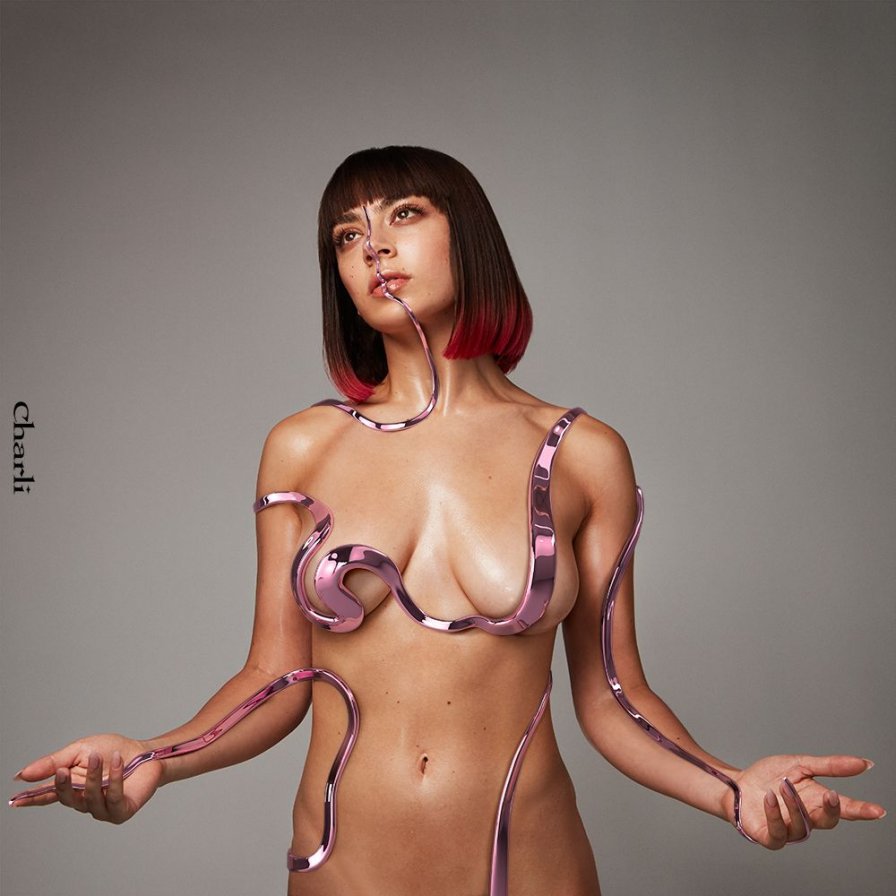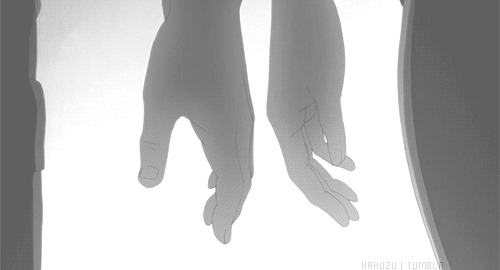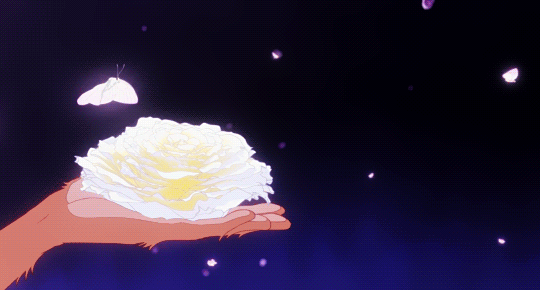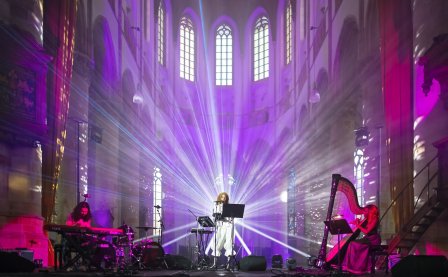For each year's first three quarters, we celebrate by sharing a list of our favorite music releases. Unlike our year-end lists, these quarter features are casually compiled, with an aim to spotlight the underdogs and the lesser-heard among the more popular picks. More from this series
A projection onto curved space. Hyper-pluralism. Machine-gun chatter chants. Punchline-worthy sound effects. Body-free. A memoir of purgatory. A burnt-sugar-embrace. The half-smirking, half-sneering view from the top. The slick velocity of the Shanghai underground. The overdetermining ethnophilosophical suppositions of “spontaneous unanimity.” The Artist Statement. Absence. Decay. Sacrifice. ⛽
We’re almost there. The end of 2019. The end of the decade. The end of music? We’ve warned you about it before, and it’s already in motion. We’re not kidding.
Until then, enjoy our favorite releases of Q3 below, cobbled together informally and presented lovingly to the people we appreciate most: you readers! <3
Fire-Toolz
Field Whispers (Into The Crystal Palace)
[Orange Milk]
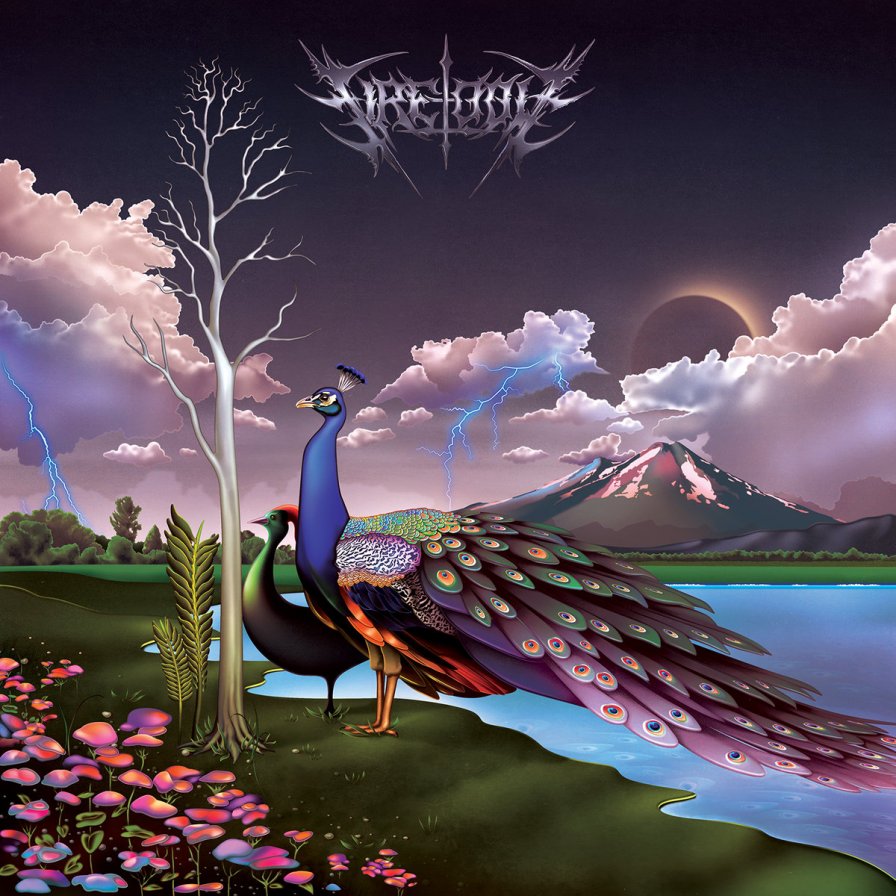
From “Old Town Road” to 100 gecs, 2019 has been a flash point for interdisciplinarity in pop music. Meanwhile, Orange Milk has been a home for maximalist, genre-bending music for a number of years now. Field Whispers (Into The Crystal Palace) from Fire-Toolz is an especially potent example of the label’s hyper-pluralistic ethos. While at home in the waning, yet still vital, milieu of vaporwave, Field Whispers is different — it has its few-seconds-long sojourns into noise, screamo, soul, trance, and ambient, and above all else, its spirit of acceleration and play. Unlike better-known examples, Field Whispers doesn’t challenge the conventional idea of the album as the primary unit of an artist’s body of work. While it never seems concerned with the task of deciding what it is, it is certainly a bounded, discrete accomplishment, with a consistent set of tendencies and references. These are, nonetheless, varied and exhilarating. From the gated strings and compressed drums of “mailto:spasm@swamp.god?subject=Mind-Body Parallels” to the mukbang ASMR conclusion of “Smiling At Sunbears Grooming In Sunbeams,” Field Whispers is thrillingly committed to its lack of commitment.
Kelela
AQUAPHORIA
[Warp/NTS]
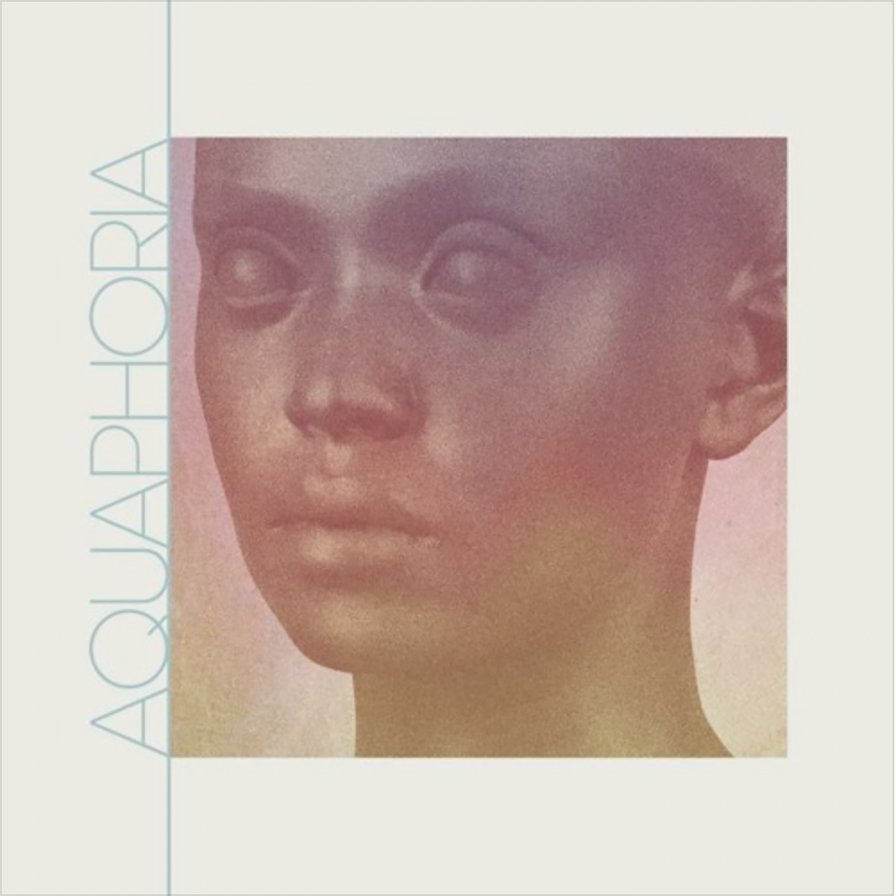
Pardon the lazy expression, but it’s probably “saying something” that, when this hour-long mix — consisting of Kelela drizzling her distinctively addictive avant-R&B vocal syrup over a creamy, fattening sundae of instrumental tracks from the likes of Aphex Twin, Oneohtrix Point Never, Autechre, and Jaco Pastorius — first materialized back in June as part of Warp Records’s 30th-anniversary NTS Radio broadcast WXAXRXP, we were actually too indisposed listening to it to even hype it up to you properly. And actually, considering the woooooonderful narcotic effect that such a decadent confection is likely to have on anyone who dares take it internally, it’s a wonder I’m able to operate this machine cogently enough to tell you about it while I listen NOW. But not for long, I fear… Between the warm bulk of the mix’s harmonic near-stasis and burnt-sugar-embrace of Kelela’s unintelligible melodies, my own words’ meanings are failing me… Civic and filial responsibilities…one by one, fading. Rhetorical desire… ughh, unimportant now. Confusssed… Stars… blinking out. Extinguissssshhhhhh… Happi, or…maybeeeeeeee? Shhhhhh…serenity. All.
Dorian Electra
Flamboyant
[Self-Released]
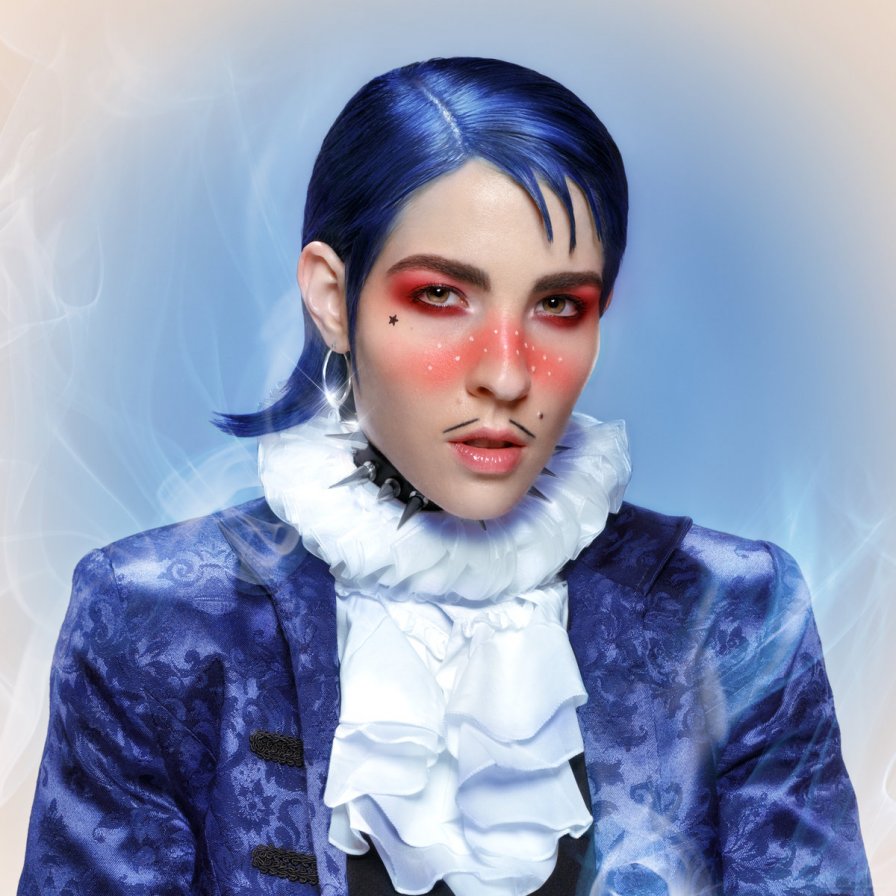
When the Met Gala announced earlier this year that the theme of their 2019 fashion show would be “camp,” many words were spent disputing the meaning of such a concept, with people debating endlessly over whose ludicrous outfits were truly campy and whose weren’t. Dorian Electra’s glammy self-released debut album, Flamboyant, invites no such uncertainty. From front to back, Flamboyant finds the Charli XCX collaborator demonstrating a theatrical ability to inhabit whatever costume suits their fancy, whether it be the lusty workaholic of “Career Boy,” the self-obsessed Mozart wannabe of “Musical Genius,” or the stunting sugar daddy of “Daddy Like.” Every portrait is as ludicrous as the last, each song juggling punchline-worthy sound effects and body-moving hooks with the ease of a court jester, even when Electra dives into more tortured subjects like the gender dysphoric man at the heart of “Emasculate.” Flamboyant is equal parts sexual exploration, character study, and over-the-top confessional (just LOOK at this music video), and evidence that as a non-binary voice rising in a new generation of left-field pop stars, Dorian Electra is on a catwalk all their own.
I Jahbar & Friends
Inna Duppy SKRS Soundclash
[Bokeh Versions]

As overuse of the words “soundclash” and “dancehall” threatens to render them meaningless, the dubvotees at Bokeh Versions and riddim-wreckers of Duppy Gun unite to burn down Babylon from within. Or some such bombast — emphasis on the bomb, of course. Frantic machine-gun chatter chants punctuate booming sub-bass and spacy synth bursts, such that systems rattle not only dirt and concrete, but also the air itself. As a result, spasmodic fits of dance are more an effect than affectation. One might rattle a dozen think pieces per track, but as the sun rises, the only question that matters is: “Who you got, A side or B?” (I say B, C says A.)
Lingua Ignota
Caligula
[Profound Lore]
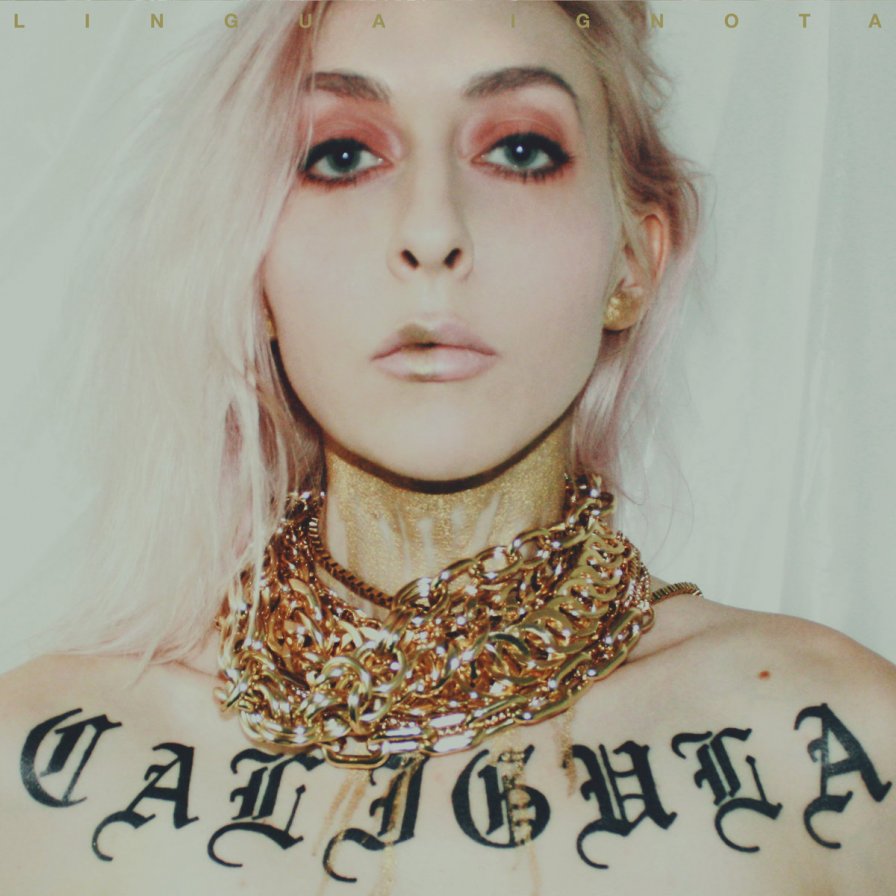
It’s never the right time for this. Life is supposed to just go on. But once properly immersed, Kristin Hayter’s music ably leaves its mark. Caligula is undeniably powerful, but its power is not the sort that fuels revelry or a hearty run. Thus far, a performance or album from this artist is less a deliberated-on selection than a gleaming double-barreled number that rolls around the dreaming bend, forcing the sleeper to reckon. There are so many whom deserve the specifically targeted curses she renders that one needn’t look far for a transposable “you.” And these are the most stentorian of damnations. For when mercy isn’t what’s needed. When strength and wretchedness weirdly prop each other up. When all you see is brilliant gushing, righteous red. Caligula wasn’t necessarily about healing, but damn if it didn’t redeem the notion of catharsis while drawing from genres that’ve routinely commodified it.
Klein
Lifetime
[ijn inc.]
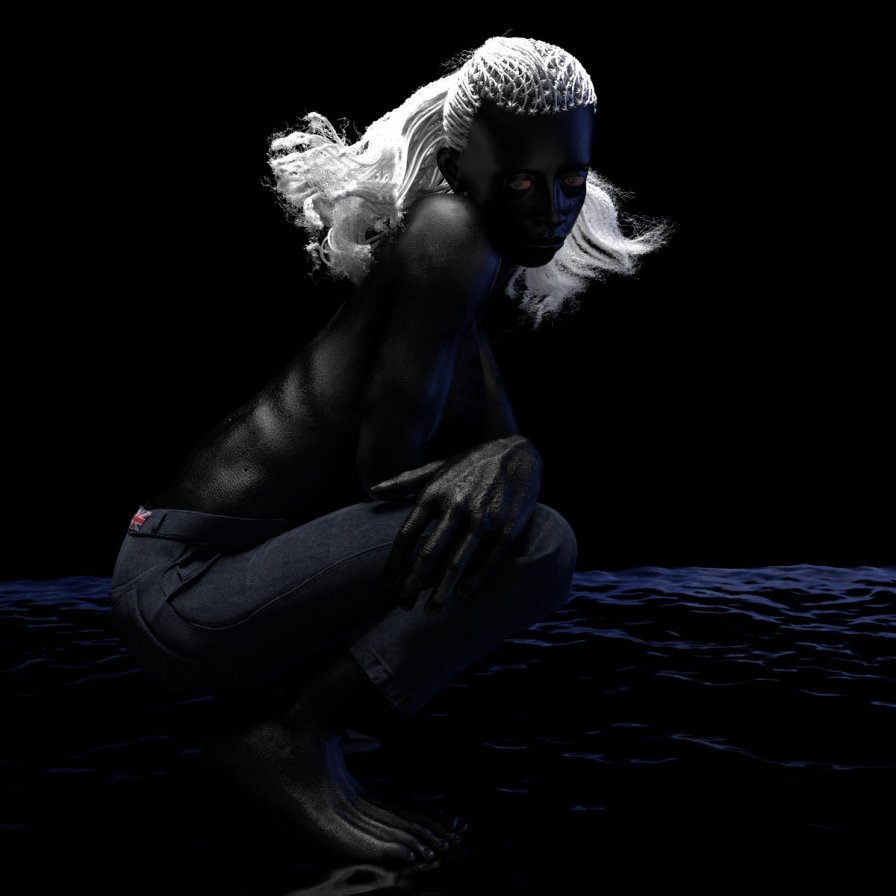
Religion and anxiety go hand and hand, feeding each other like an eternal ouroboros. It can’t be stopped, only documented. Lifetime gives us evidence that Klein understands this. This is true evangelical music, thrashing and worming at itself and everyone else, gripping and paralyzed with dread. Klein takes us on a spiritual journey, juxtaposed with mundane recordings; each moment consecrates the last. Her devotion to warping every last sound and nuance only breathes more paranoia into Lifetime, fashioning it into a memoir of purgatory. You are on the ride, and you can’t let go. Let Klein help you.
Young Thug
So Much Fun
[300 Entertainment/Atlantic]

Classify him as you will; postmodern poster boy Young Thug is one of the best rappers operating, and all he does is get better. So Much Fun is an album that is the flipside to everything dark and threatening that has ever brooded Thugger’s music to this point. As Thug says, “Hits bring money, money bring power, power bring fame, fame change the game,” and So Much Fun is indeed entertainment. But even casual fans know by now that nothing about Thug is typical or boring. The production is masterful and most of the (many) collaborations are colorful, but it’s Thug’s album, and So Much Fun is as cliché-ridden and deep and silly and surreal as ever.
Felicia Atkinson
The Flower And The Vessel
[Shelter Press]
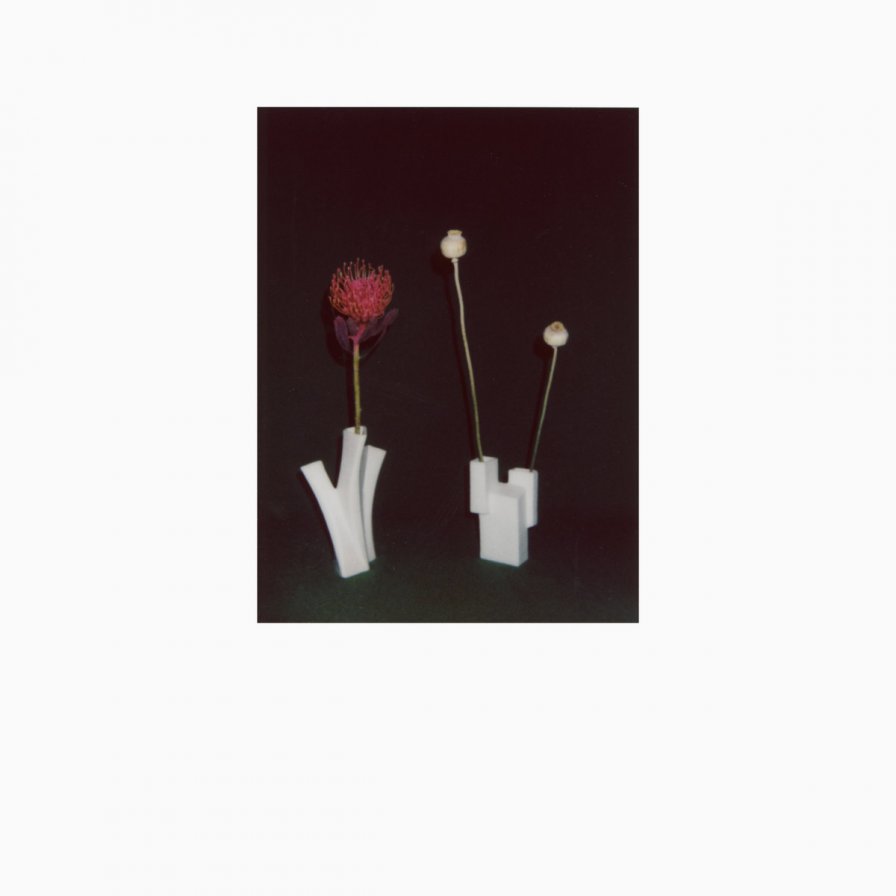
Felicia Atkinson’s The Flower and the Vessel is different every time we listen to it. Initially, it could be the shimmering synthesizers and resonant overtones that attract attention. On a second listen, it might be the plethora of field recordings and found sounds, while during another moment it’s Felicia’s whispered, affecting poetry. No matter what emerges to the forefront of a given listen, these multi-faceted layers reel us in, combining to form what isn’t so much a collage as a space of its own — and a surreal one at that. But as irresistibly magical and alien as it is, The Flower and the Vessel is in the end about the human experience. And it might just be Felicia Atkinson’s best album to date.
Slug Christ & Nedarb
DEEP (un)LEARNING
[Self-Released]
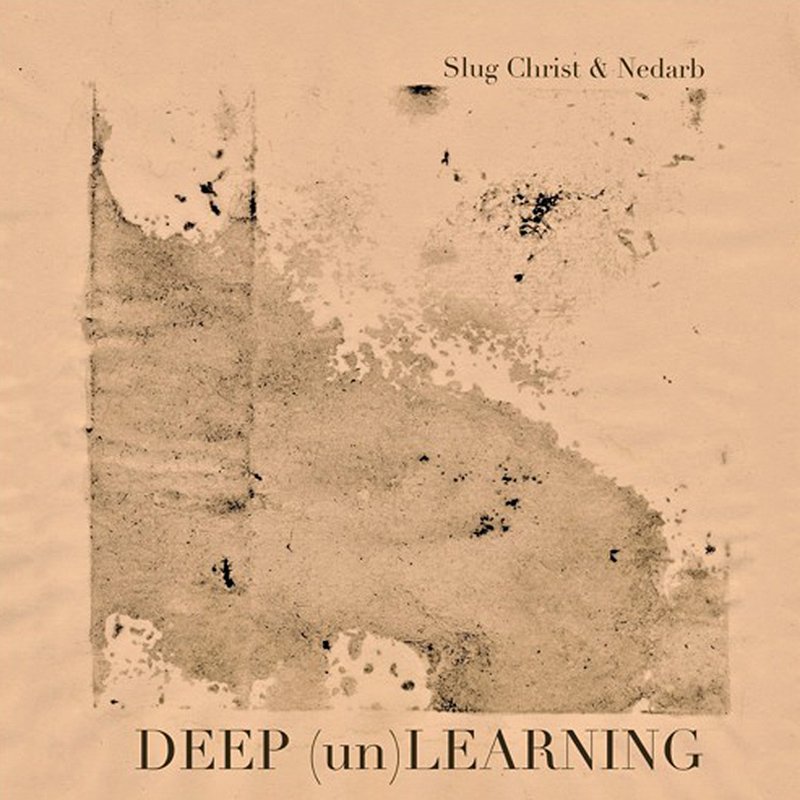
Slug Christ’s divine mythos has always existed within the recognizable world, though the Atlanta rapper/producer’s esoteric leanings hint at astral origins. While past output has confined Slugga’s metaphysical studies of the Demiurge, plant mentality, and transfiguration to the staid structures of grimy trap instrumentals, collaborator Nedarb Nagrom has awakened his period of DEEP (un)LEARNING. Culling aesthetic cues from Bandcamp bedroom pop and the early 4AD Records catalogue, the EP marks a creative breakthrough — Slug’s hedonist lyrical hallmarks are shed for deeper, more inscrutable introspection, while the aural clouds that incubate him feel as prickly and immersive as a Fennesz soundscape. From the depths of unlearning, a new salted slug hatches.
(Sandy) Alex G
House of Sugar
[Domino]
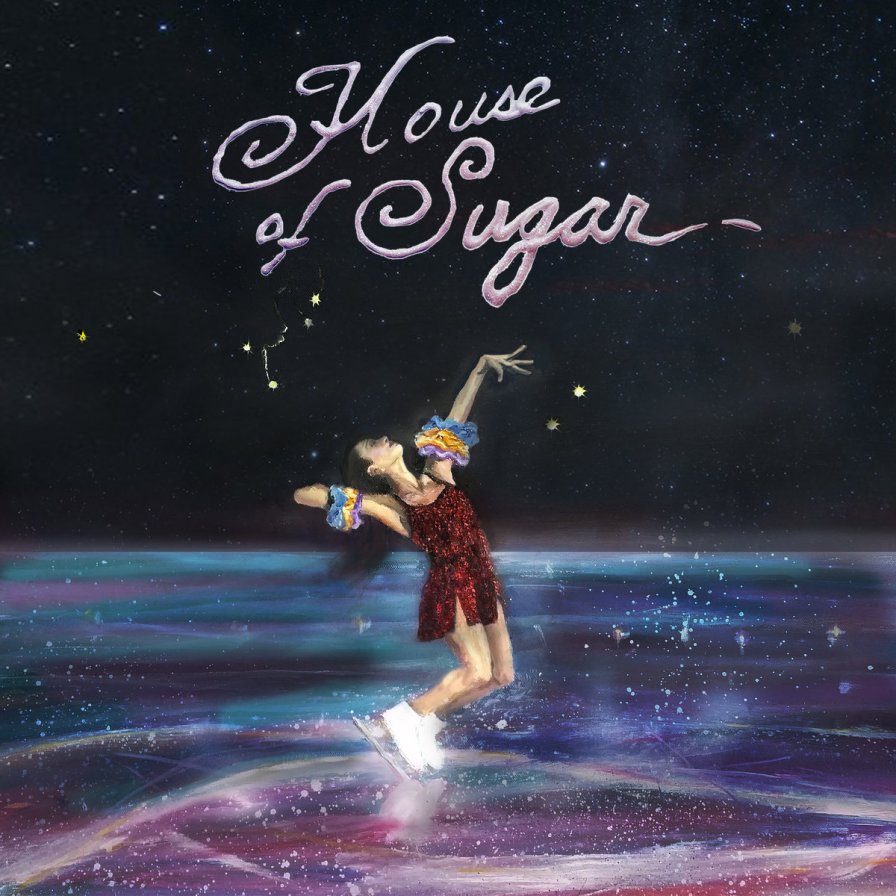
File under: slacker guy pounds back a lager and lands a kickflip while belching out a tune but ah fuck it was actually pretty good and really fuckin’ smooth and it got a small response from the group but really just one unanimous “heh” because we were too surprised and impressed to fester up much more and dude I’m pretty sure you teared up a bit didn’t you I bet you did actually it kinda reminded me of your big brother man haven’t seen him in a while is he doin’ alright what’s he been up to ah shit sorry to hear it man fuck that’s rough hope he can find the space to heal and grow it’s pretty hard out there and inside too.
Barker
Utility
[Ostgut Ton]
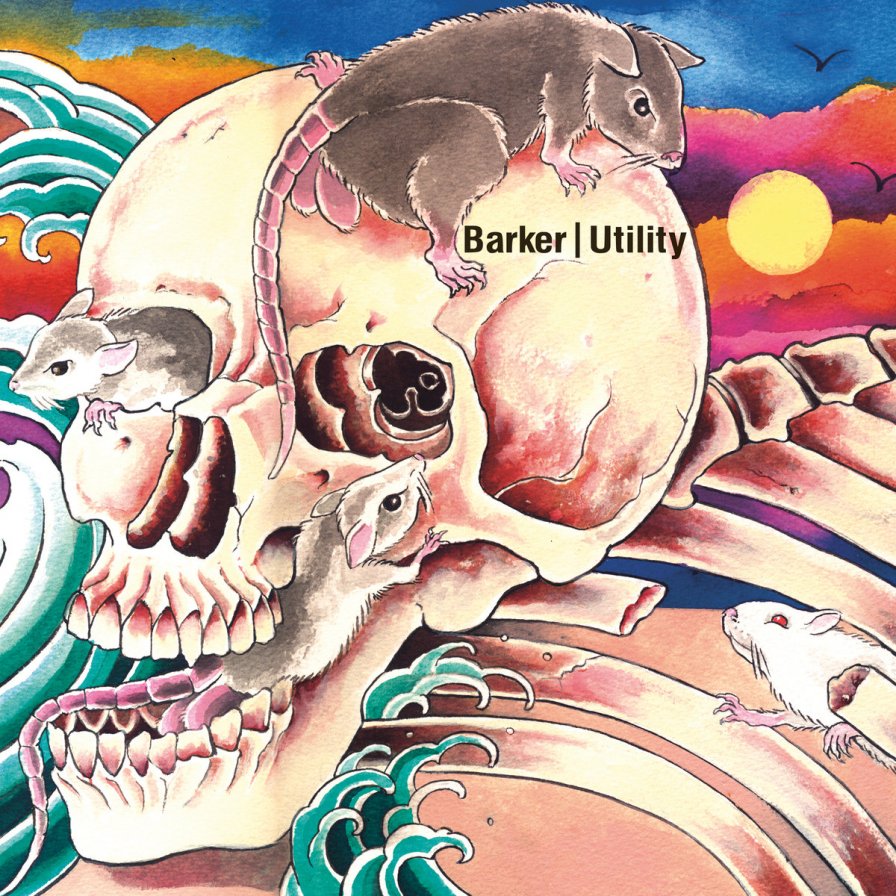
With Utility, Barker finally gave us a full-length of his elegant, “no kick drum” techno, stretching out and relaxing in a space where the propulsiveness of techno and the drift of ambient are rendered one and the same. It’s a vivid, alert slide, bright trance synths shimmering and pulsating, skittering in and around crests of white noise and glistening sustains. The attack of the synth envelope begins as percussion, instantly becomes sustained harmony, decays, releases — a note here is a point and a wave, a beat and a tone. In lovely, luxuriant fashion, Barker crafts the liminal space where rhythm and melody and harmonics merge, where movement and dissolution are one and the same, where we are left alert and bright-eyed but joyously adrift, joyously unmoored.
Caleb Giles
Under the Shade
[Self-Released]

It wouldn’t be a stretch to describe Under the Shade as a fleeting moment of levity. Released in the grip of another cruel summer, the album plays with the same sonic and lyrical thematics that the oftentimes too-weighty There Will Be Rain did, both above and below the surface; the overall vibe is breezier, but nonetheless languid, wondering. For all of Caleb Giles’s bundled-up ennui, though, I can’t help but feel a diffuse sense of hope shining through these beats and bars, like sunshine spilling through the cracks. That much seems true right from the get-go, wherein he’s “liv[ing] exhausted, but able.” The dark of the shade can be overbearing, but always know that out of darkness cometh light. Or, in Giles’s phrase, “the light and the dark are both beautiful, and there’s a lot to take from both.” That duality is manifest at every interstice of Under the Shade, safe in the knowledge that the come-up must necessarily follow the comedown.
Slikback & Hyph11E
Slip B
[SVBKVLT]
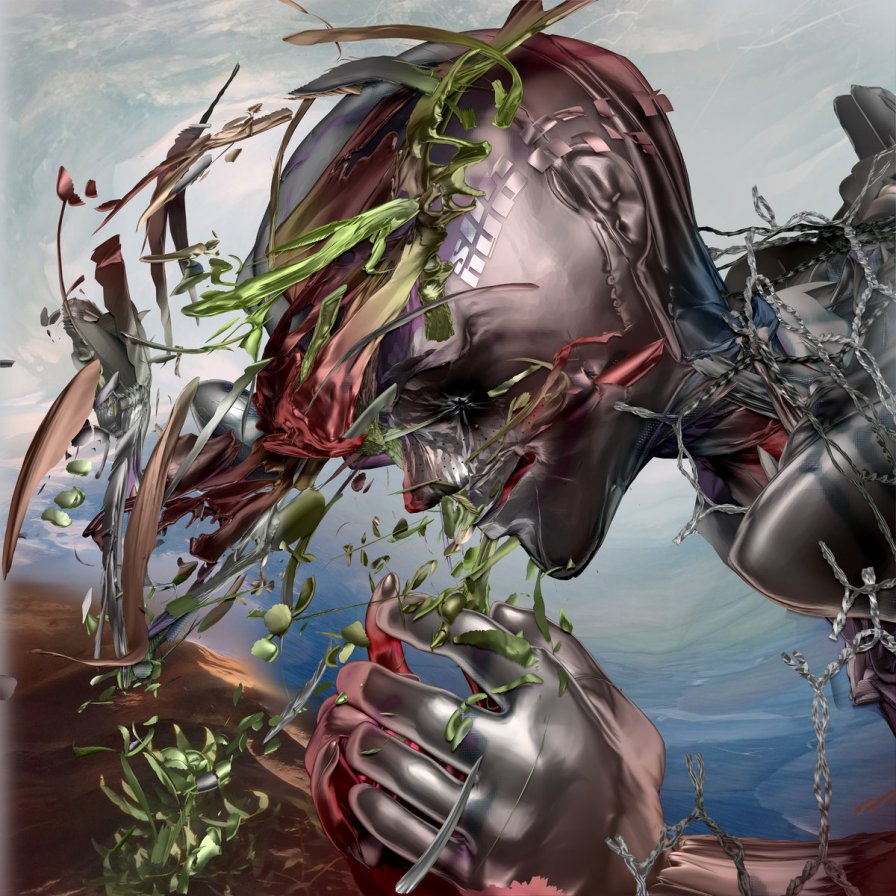
What is made of titanium, weighs two tons, & moves at 200 km/h? If you guessed Slikback, you’re in for a nice surprise: these tracks are twice as fast, five times as heavy, & brought up red-hot to the melting point. Sponsored by Nyege Nyege Tapes on a residency across various Chinese cities, Slikback alloys the entropy of singeli & the East African club scene with the slick velocity of the Shanghai underground on this collaborative EP with SVBKVLT producer Hyph11E — oh, & it’s hype indeed. We’re moving way past corporatized globalization here; time’s up for We Are the World & neoliberal solidarities. With interconnectivity increasingly co-opted for profit, these two producers are showing us the way toward the disassembly & reassembly of new pathways of horizontal communication: No more layover between Nairobi & Shanghai!
Bill Callahan
Shepherd in a Sheepskin Vest
[Drag City]
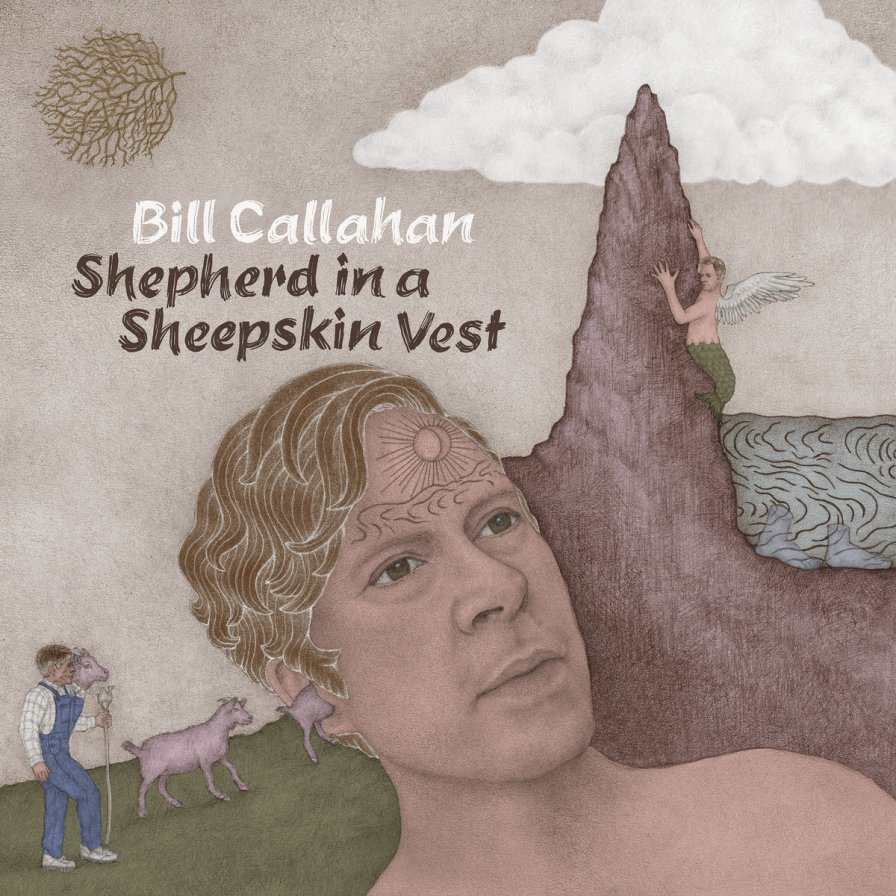
Shepherd in a Sheepskin Vest speaks to an acceptance that’s been missing since Bill Callahan dropped his Smog veil. Where once he retreated, naked from the pseudonym he shed, Shepherd in a Sheepskin finds him not clothed in the titled garment, but finally taking it off to reveal his starkness. He tells us that, looking back, he sees “salt… or sugar” — a lustful tendency to cast off the opportunities of anger in favor of happiness now fulfilled by family. Yet, in contentedness, he reconnects with those lost opportunities to lambaste corruption through the disguised visage of the Four Horsemen. We see the fear, worry, and acceptance that comes with parenthood. Even as he has emerged through the smoke that once cloaked him, we also see in his nudity the frailty of continuing doubt, thrust upon those inured with loved ones. It was once distant, but now it rattles close — perhaps too close — to home.
DJ Haram
Grace
[Hyperdub]

You walk off over a dune. I stay in the surf. In a past time, we might have read into those actions in symbol-struck prosodies for our Tumblrs. It was fun to see a touch of divine in an innocuous motion: a shared loaf of bread, a cracked car window, staying, leaving. You walk off. I stay. I bow my head in the surf. The first sound is the water filling, a ping and a wash like a sounding flute snapping and spilling over. Then there’s the fullness, a body being pressed into this new state, this grace. Tendrils and tunnels might be coalesced in percussion. In the bang, we might remix new mythologies. Grace is the invented sensation of electric peace, a restless recombination of sound to steel us through the losing and spur us into imagining after. I lift my head. You’re on the beach again. Leaving changes seeing; staying renders remembering. Knowing you is grace.
Freddie Gibbs & Madlib
Bandana
[Madlib Invazion/ESGN/Keep Cool/RCA]
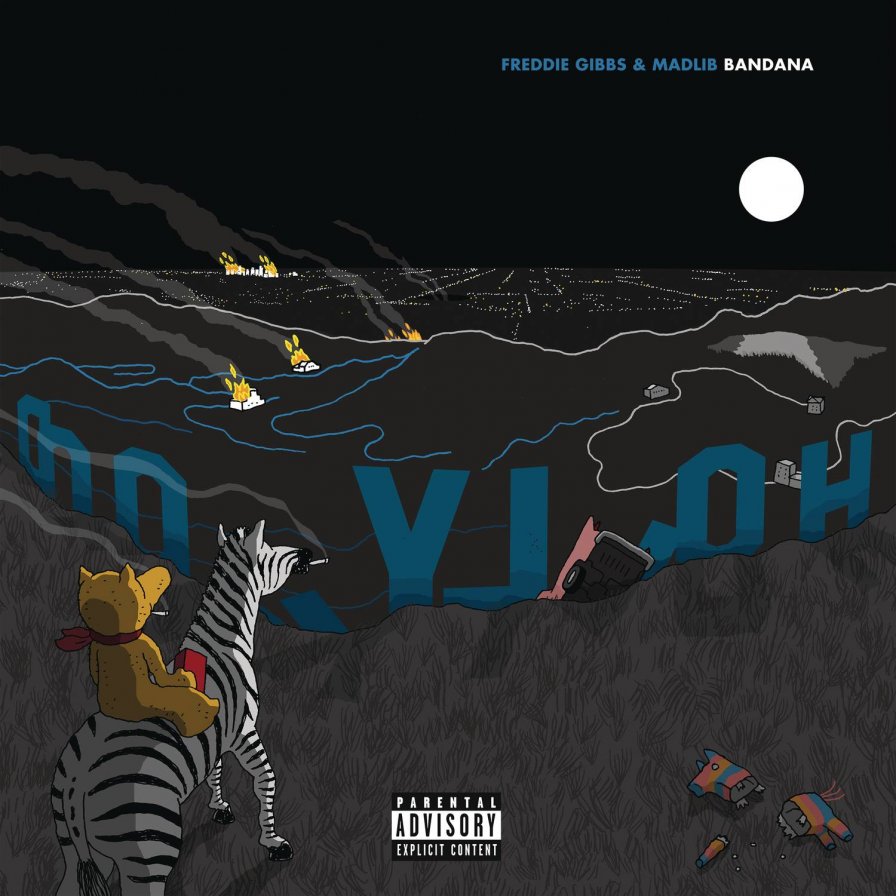
“I made all of the beats for Bandana on my iPad.” With one tweet, Madlib gave whatever detractors he had left the ammo they needed to attack the long-awaited follow-up to Piñata. Maybe this thing was going to feel tossed off, inessential. But from the exhilarating fake-out of “Half Manne, Half Cocaine” to the supremely confident victory lap of “Crime Pays,” Bandana exceeded expectations. There was, of course, no guarantee it would work out that way — rap history is littered with underwhelming follow-ups, from Clipse’s Til The Casket Drops to Jay-Z’s In My Lifetime, Vol. 1. Yes, Piñata’s highs are tough to fuck with, but for my money, I’ll take Bandana, iPad beats or no. Why? Just look to their respective cover images. Piñata is a no-holds-barred document of Freddie’s hustle out the streets. Bandana is the half-smirking, half-sneering view from the top, where fun matters more than the next leg up.
Maral
Mahur Club
[Astral Plane]
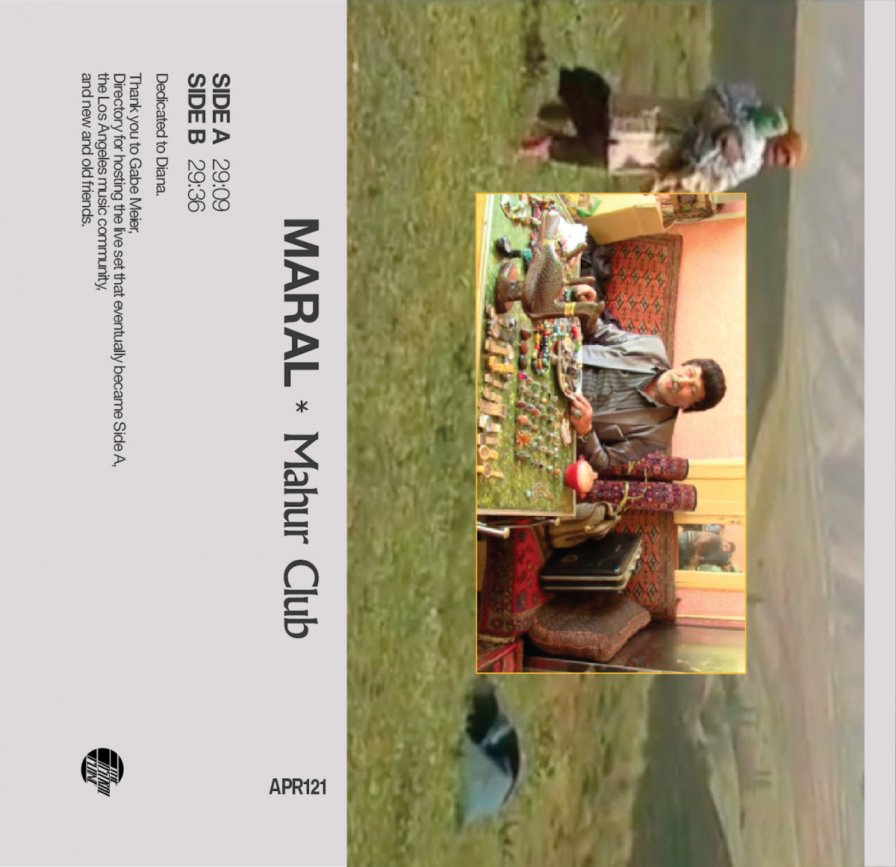
Sometimes strange, harsh synchronicities reach their shadowy, claw-like fingers across the void of digital consciousness to draw parallels that bear fruit so overripe that it’s rotten, sweet yet stinking, with an underlying bitterness that savors of its forbidden nature. In this way, Maral’s Mahur Club can be read as a companion piece to the 2016 film Under the Shadow, a ghost story set in Tehran during the Iran-Iraq war of the 1980s. As bombs rain down and buildings collapse, a sinister and deceptive haunting weaves its way into lives disrupted and distorted in chaos and rubble. Mahur Club reflects this atmosphere somewhere between ghostliness and brute destruction, fear and melancholy — clipping dembow beats combine with found sound Farsi vocals, Persian classical loops and distant screams (not to mention Aaliyah samples, yet another layer of tragic hauntology combined with a sharp grittiness) to produce a paradoxically spectral yet undeniably visceral immediacy.
LEO PaLAYENG
KONO WIYE OCUNG
[Lamyel Legends]
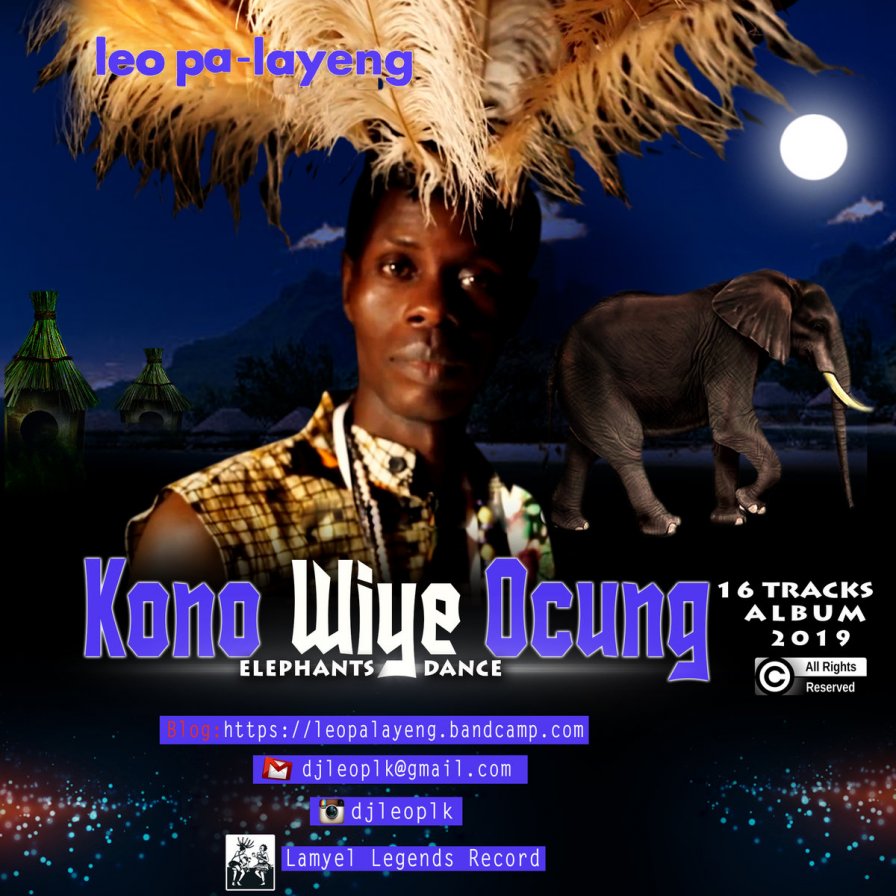
What’s next? It starts with some plucks of the lukeme, some strums of the adungu, some taps on the calabash. And then: and then. And then the shit flies off the handle, pulse careening through and beyond meter, through and beyond telos, through and beyond the ablative constraints of through and beyond. Such is the headlong sensibility of Leo PaLayeng Kenna’s “Acholitronix,” his exuberant brand of contemporary electronic music railroading Acholi folk music and blistering bass too volatile to pin into the confines of either Westernized genre or ethnicized tradition. When PaLayeng, ever the provocateur, asks us “Ladies and Gentleman, can we dance to legacy over we?” he jukes what Paulin Hountondji terms the overdetermining ethnophilosophical suppositions of “spontaneous unanimity,” insisting on the necessity of — or, better, the delight in — ushering the next.
Oren Ambarchi
Simian Angel
[Editions Mego]

Absence is a troubling matter. Absence by death especially, but also absence from life in general. Maybe you have a good reason to not be around. But it shows in the people you know. It makes you wonder how you can connect with them afterward, when your absence defines you. One can struggle with that for a long time. And even in absence, it’s not like the void is silent. It speaks to you in different ways, reminding you of the places you aren’t. Reminding you that, despite your best efforts, you’re always distant from what is around you. Your mere presence can feel threatening. You try to turn it into static, but it instead becomes many sounds from many sources. A beautiful, seductive cacophony that doesn’t make you forget where you are.
Kali Malone
The Sacrificial Code
[iDEAL]

The Sacrificial Code offers a channel for reflection and contemplation, while simultaneously depicting a process for reconfiguring any preconceived notions of what organ music might sound like. Over the course of almost two hours, Kali Malone tests the boundaries of her instrument through what sounds like a powerful act of constraint. It’s as though she wishes for the instrument to exhibit its intricate spectrum, and you can hear her encouraging it to blossom. But in order for that to happen, she has to restrict it. Malone nurtures her instrument, coaxing the most resonant and emotive tones while distorting its breadth by limiting its acoustic potential. The impact is positively spellbinding; it’s an epic and meditative demonstration of the instrument’s capabilities by virtue of limitation, or indeed sacrifice. But because of that restriction, the instrument’s very essence is brought into focus, and never has it felt so compelling.
Pharmakon
Devour
[Sacred Bones]
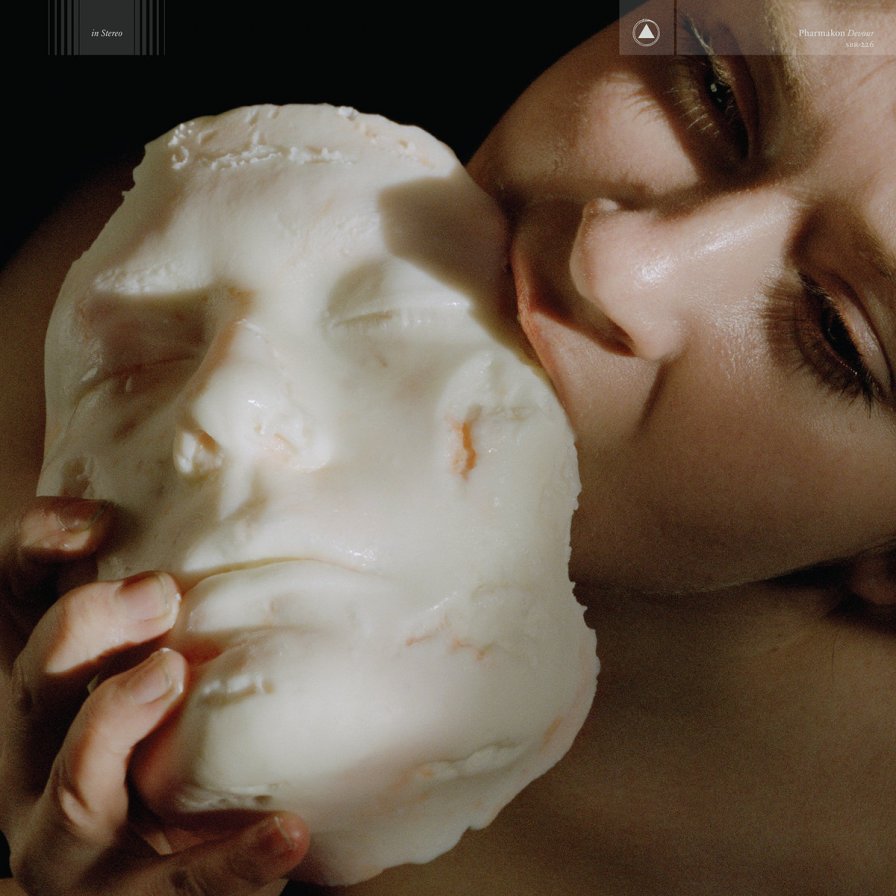
Margaret Chardiet is nothing if not painfully consistent. With each Pharmakon album, she claws deeper into human materiality by testing our collective body’s physiological limits. If Chardiet’s output were any less galvinizing, it might seem like a stale joke by now: “this next one is about flesh and stuff.” Notably, Devour reminds me of Matana Roberts’s masterwork, COIN COIN Chapter Three: River Run Thee, in both form and affect. Both were recorded live in studio in one continuous take, both strike a funereal quality, both invoke a downward spiral. As with each Pharmakon release, Devour arrives with an Artist Statement: “This album is dedicated to all who were lost to their own demise… It is for all those ostracized by and isolated from a totality which chews them up alive in a self-cannibalizing caste system. Here, where martyrs, slaves, and pharmakos are not eradicated, but simply called by another name.” As always, Chardiet’s accompanying words are an amplifying compedium to her music, but if you’ve made it this far, you already know, you know? This is healing music “for the rest of us who understand that chaos, madness, and pain and even self-destruction are natural.” If that’s you, let this devour you instead of self-disgust, because from inside our own bellies, there ain’t no one of us who needs an excuse for making it out alive.
Various: World Music
ZUSHI!
[World Music]

As notable as it is that Panda Bear and A$AP Rocky are featured on World Music NTS Radio set ZUSHI!, their bits aren’t the most interesting aspects of the 36-minute collage of Dean Blunt purist glory. Somber slices of melancholy surround the flourishing waves of ZUSHI!’s postmodern rhythm and blues, tightly sealed in lyrical rhetoric that embody the vocals of each singer — not to mention the lush old-school Blunt interludes that unravel throughout. And with the help of World Music fan favorites DJ Escrow, Mica Levi, and Joanne Robertson, including relative newcomers to the label’s aesthetic, jonatan leandoer96 (Yung Lean) and Sauce Walka, ZUSHI! finally resolves the question, “What has Dean been up to since we last heard from him?” Answer: right where he left off with ⛽, only with a little more theatrics this time around.
Bon Iver
i,i
[Jagjaguwar]
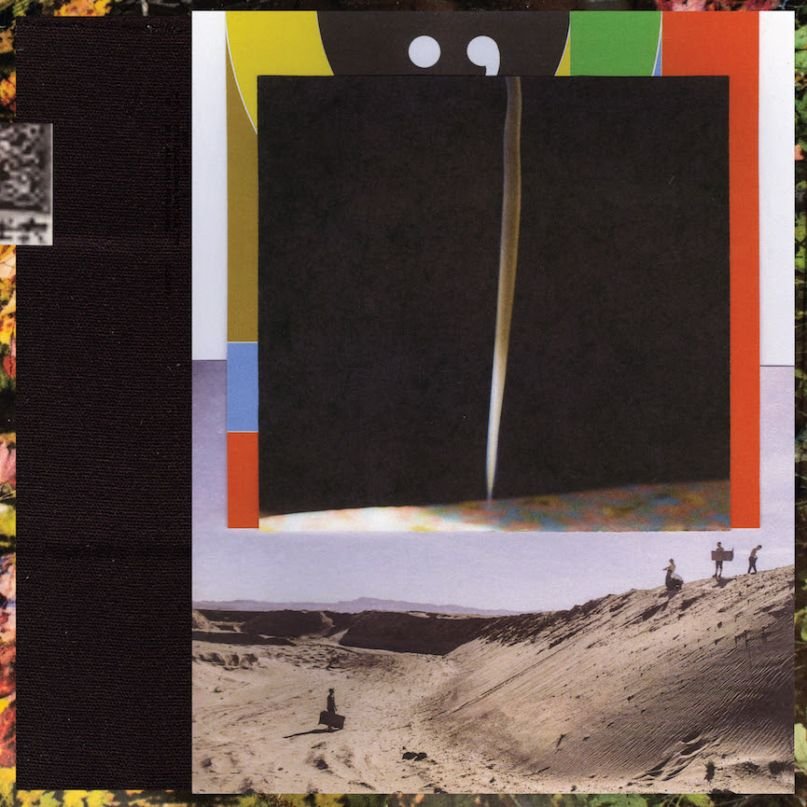
“I am!,” “Man!,” “Crying!,” “You!,” “Time and again!,” “How art!?” — the verncular of Bon Iver’s Justin Vernon is once again familiar yet impenetrable. Why do we fall so hard for this preening nonsense? The voices themselves contain the essence, require no language. i,i, the fourth Bon Iver album, is “autumn,” thus retrofitting the group’s discography as seasonal, cyclical. An autumn album means acknowledging decay. The bass rumbles like a canyon, the horns prickling leaves, the vocal layers dry and arid. After the ecstasy of summer is the realization of cyclical completion, because at the end is the return to hibernation. References to past motifs are plentiful; this is the key to Vernon’s success: the feeling of movement is merely an illusion, a projection onto a curved space. i,i revels in a simple, delicious trick: the human desire for patterns, which rise and fall in tension and can be reproduced endlessly.
Moodymann
Sinner
[KDJ]

Moodymann has one hell of a voice. He’s always sung, scatted, floated over his own tracks, albeit mostly in the background, the odd “uh” or “oww” decorating the beat like a hi-hat or blending in like a sample. Even a rare interview appearance is ripe for re-purposing (or, pessimistically, deracinating) as a sample. On Sinner, though, he’s front and center; even while mumbling half-hooks and exhortations, he’s present to an almost unprecedented degree. In speaking up, is he wresting back control of his own narrative? Simply trying something different (as usual)? It’s impossible to know, and Moody’s not telling.
YATTA
WAHALA
[PTP]
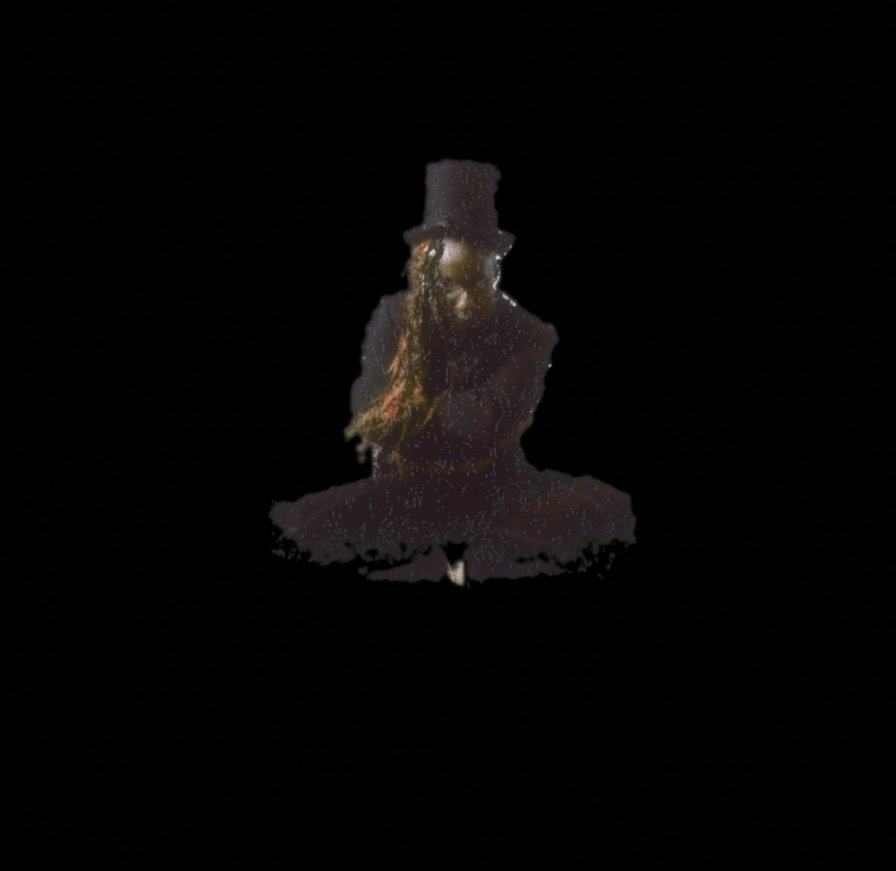
Calm like an artificial moon adrift in an isolated part of the universe, the steady song cycle shakes moment to moment from ripples in the arrangements and hairline fractures along its soft granular architecture. A run of the finger over the rounded edges chips and glitches digital glass into folk fragments. Dodging all the automated glut of binary production, YATTA mold the music around their voice, not crooning or shoegazing, but singing, central and vulnerable. On occasion, pitch-shifted conversation pieces offer caffeinated interjections (“Rollin”) like metropolitan disruptions singed into the flickering digital shapes and shards moving across the backdrop. Other times, they stitch altered vocals to create short buttered stacks of Vespertine harmonies (“Francis”). The soft landing and rescue mission of “Shine” and “Underwater, Now” float the listener on still waters, like Sully on the Hudson.
Florist
Emily Alone
[Double Double Whammy]
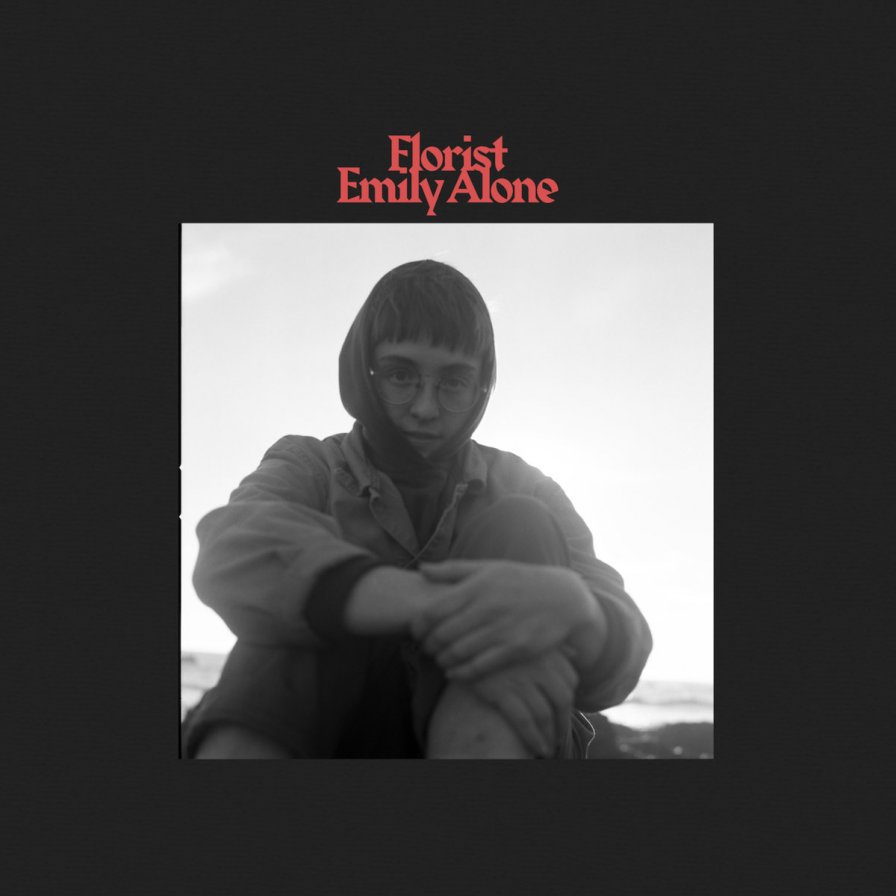
Florist’s Emily Alone is a simple album. With no band around this time, there’s not much in terms of instrumentation besides Emily Sprague and her guitar. Simplicity is nice, but it’s not everything. It still needs to be held up by great songwriting, which Sprague has given us time and time again across various projects. Emily Alone happens to feature some of her best writing yet, with a gorgeous, affecting lyricial simplicity that hinges on precision and a deep understanding of the emotions she’s trying to convey. I can’t write too much without overcomplicating things, so here are some of Emily’s words that I’ve been thinking about since the record came out: “I want to go to the ocean/ I can wait for nobody,” and “I walk and I read, I spend time in the sea/ And nothing brings clarity to what makes me me,” and “If I could see the future/ I would lay down/ Eat a tangerine/ And make a cup of tea.”
Jenny Hval
The Practice Of Love
[Sacred Bones]
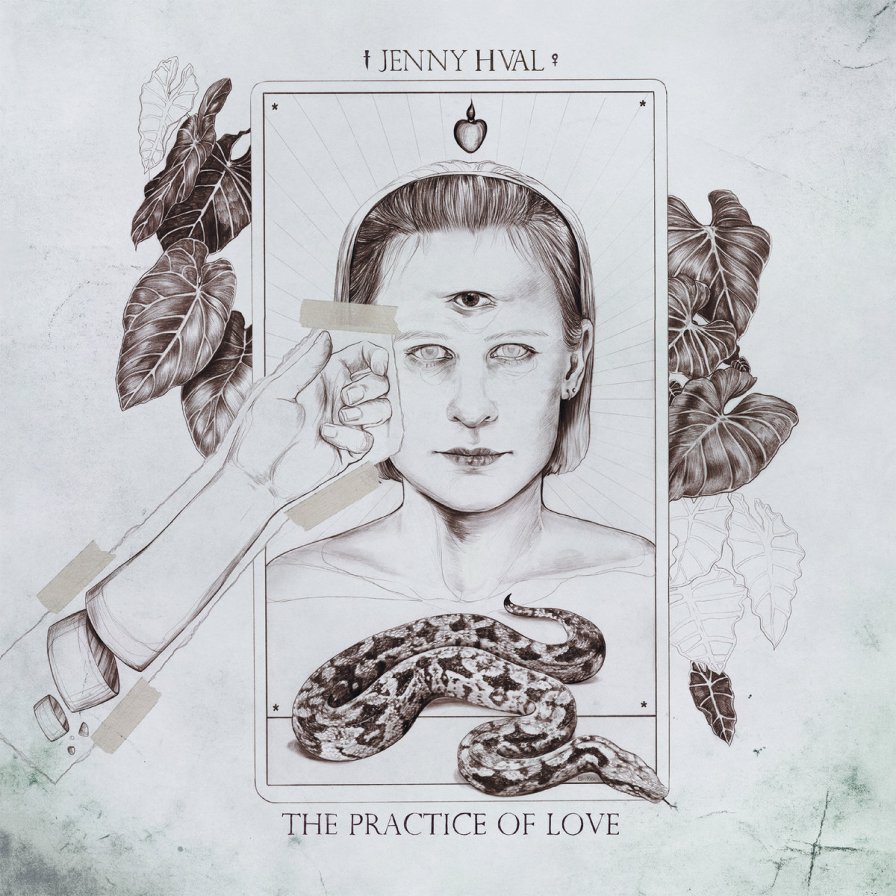
What does it mean to love? Can the answer ever be spoken adequately in any language? Jenny Hval will try to transcend. She can’t make the audience, so she makes up a game. Participation in this fantasy means risking embarrassment, so don’t break character. Follow the rules, don’t rush. With any luck, you will feel beautiful music. OK. Let’s do it. Click. The tonic shimmers out, a desiring fluid. A twisting stellar gem body of techno. A pearl smog engulfs. I aspirate the warm, heavy smoke. I am breathed, too. I feel nothing. I am body-free. Just empathy and recognition. You are clumsy but enthusiastic and not artificial at all. Grinning, I am tossed in your spiral. We focus on different parts of the same image. We both enjoy the stories. Softly, skillfully, around and around, vivid loops of friction. Sex dissolves into mist, into clouds, into rain. Must keep moving. Can’t lie dormant. Horror grows in the dormant places. Must remain moving under my eyes’ light; alive and ever vibrating. Can’t hurt me. Keep it soft and moving smoothly. A place to communicate subtleties.
More about: (Sandy) Alex G, Barker, Bill Callahan, Bon Iver, Caleb Giles, Charli XCX, Dean Blunt, DJ Haram, Dorian Electra, Félicia Atkinson, Fire-Toolz, Florist, Freddie Gibbs, Jahbar & Friends, Jenny Hval, Kali Malone, Kelela, Klein, LEO PaLAYENG, Lingua Ignota, Madlib, Maral, Moodymann, Nedarb Nagrom, Oren Ambarchi, Pharmakon, Slikback, Slug Christ, Yatta, Young Thug
For each year's first three quarters, we celebrate by sharing a list of our favorite music releases. Unlike our year-end lists, these quarter features are casually compiled, with an aim to spotlight the underdogs and the lesser-heard among the more popular picks. More from this series

